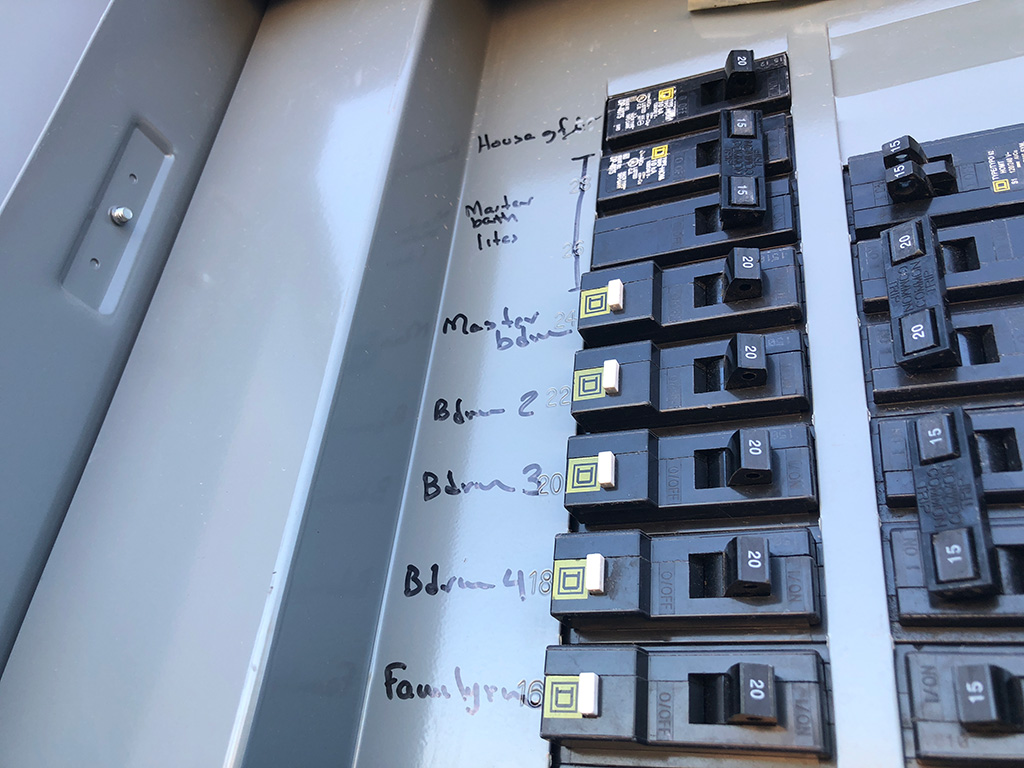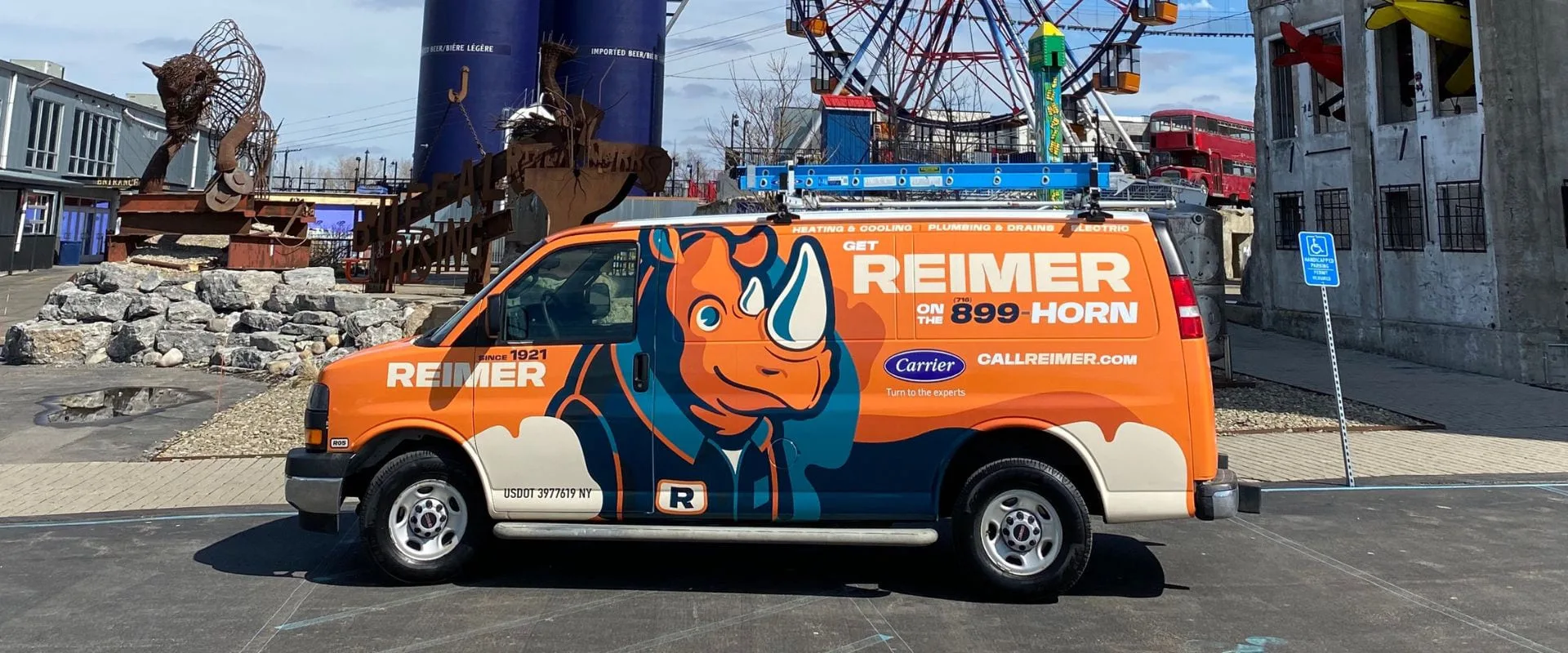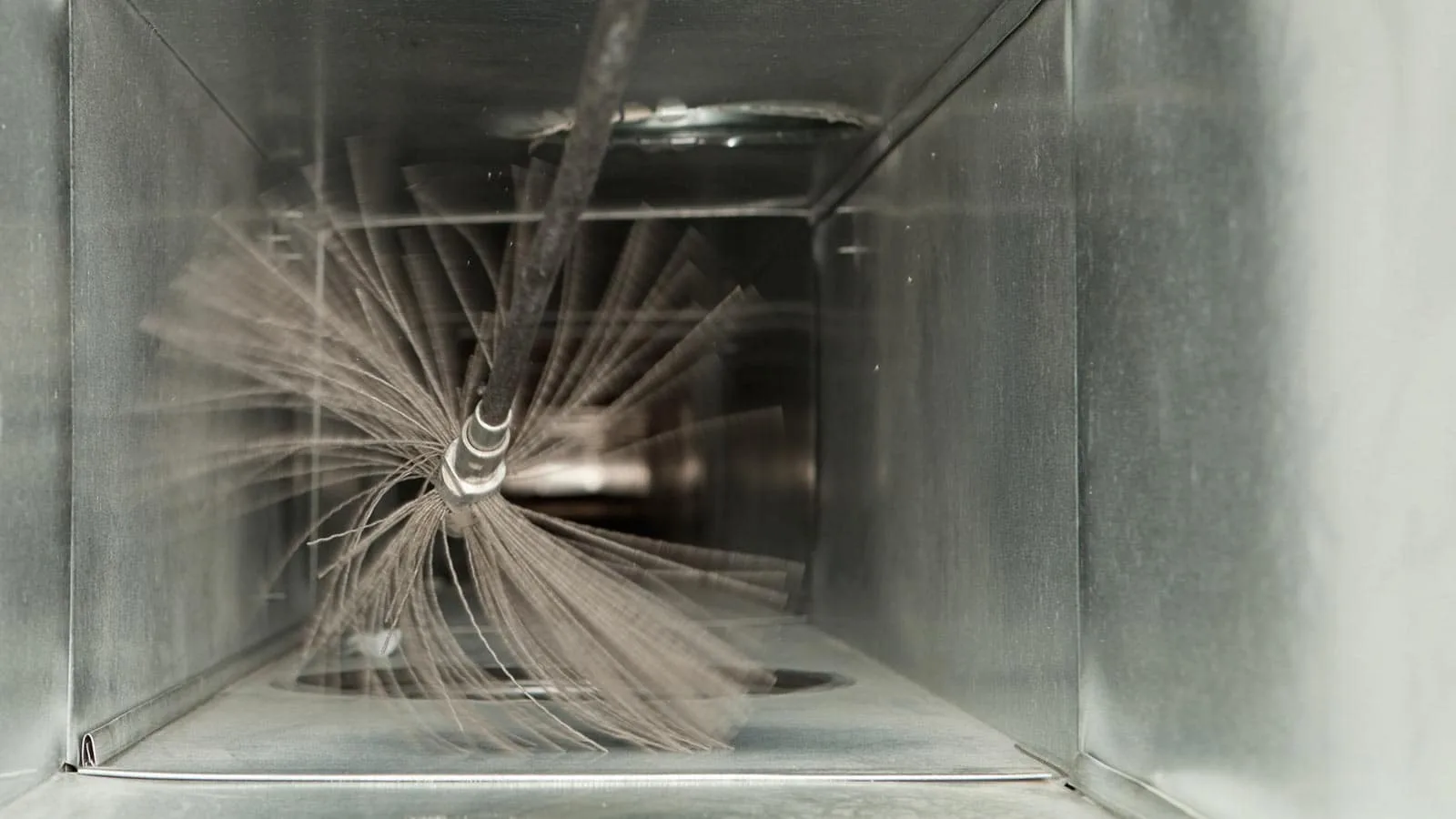Most homeowners take electricity for granted—until the lights go out. That metal panel housing rows of switches? It’s actually the brave guard protecting your entire electrical system. The largest switch? That’s the mighty main circuit breaker, serving as command central against hazards like overloads, short circuits, and ground faults.
This heavy-duty device constantly monitors current flow, ready to cut power at the first sign of danger. But do you know how it works? Or why breakers occasionally trip despite your best efforts? Get the full scoop on your home’s front-line electrical defender, from its ingenious internal mechanisms to simple maintenance tips.

What is a Main Circuit Breaker?
The main circuit breaker is the primary electrical safety device in your home’s electrical service panel or breaker box. It is the first point where the electrical current from the utility line enters your home’s wiring system. This heavy-duty switch acts as the principal on/off control for the entire electrical supply feeding your home.
The main breaker unit itself consists of an outer casing that houses the vital internal workings – conductors that carry current, sets of contacts that open and close circuits, operating mechanisms to trigger the unit, and trip components that respond to overcurrents.
Visibly, it takes the form of a sizeable switch or lever, frequently situated at the top or side edge of the electrical panel box for convenient reach. Residential main breakers commonly handle high amperages in the range of 100 amps up to 400 amps to meet a typical home’s power needs.
The main breaker serves a dual purpose: First, it provides a centralized cut-off switch to disconnect the entire home’s electrical system all at once when needed. Secondly, and crucially, it safeguards against dangerous overload scenarios. If the total electrical load begins exceeding the breaker’s rated amperage capacity, it will automatically trip the circuit and interrupt power flow.
This overload prevention mechanism is vital – it stops potential electrical fires before they start, prevents wiring damage, and mitigates shock risks from an overloaded system. The main breaker’s overload detection is the first critical safety layer.
All of the individual branch circuit breakers controlling power to each room, appliance, and outlet are connected after and receive their supply from this single main breaker feed line. It acts as command central, regulating electrical flow while standing guard against overcurrents that could create safety risks. Properly sized for your home’s total power needs, the main breaker is the first critical line of defense in your electrical system.
How Does a Circuit Breaker Work?
With the main breaker’s vital roles understood, it’s time to lift the curtain on how this hardworking device actually springs into action. The inner workings may seem like magic, but there’s an ingenious mechanism at play.
At the heart of every breaker lies a conductive path formed by terminals, contacts, and a specialized bimetallic strip. Think of this as the roadway electricity travels along under normal conditions – with the bimetallic strip acting as a sort of thermal tripwire.
You see, when electrical current follows the proper flow, everything operates smoothly. But introduce an overcurrent into the mix, and that’s when the bimetallic strip really earns its keep. Excessive amperage generates heat within this reactive strip, causing it to bend in a very precise way.
This bending motion triggers the breaker’s internal trip mechanism – essentially a spring-loaded latch keeping the contacts closed. Once the bimetallic strip pulls that latch, the contacts are forcibly separated, abruptly breaking the circuit and halting any further electrical supply.
For cases of extremely high currents, breakers employ a second tripwire – an electromagnetic coil. Sudden current spikes create a powerful magnetic force that activates the trip latch nearly instantaneously before the bimetallic strip can heat up.
Once tripped, you’ll visibly see the breaker’s operating handle in the “off” position as an indication that the circuit has been interrupted. From there, the root cause of the overload must be identified and resolved before resetting the breaker and restoring power flow.
Modern breakers have even more intelligent safety features like ground fault interrupters. These monitor for leaks or imbalances in the electrical flow that could lead to shocks, tripping the breaker to protect people from harm.
So in essence, circuit breakers combine innovative thermal and electromagnetic detection mechanisms to keep a vigilant watch over your home’s electrical system. The moment abnormalities arise that could damage wiring or spark hazards, these essential devices automatically step in to break that circuit and ensure safety reigns supreme.
Types of Circuit Breakers
While the fundamental mechanism of circuit breakers is universally the same, there are actually several different types available with their own unique characteristics. Depending on the application and safety requirements, certain breaker varieties make more sense than others. Here’s a rundown of some of the most common types:
Standard Thermal-Magnetic Breakers
The thermal-magnetic breakers found in most residential panels are the tried-and-true workhorses, but don’t let their conventional design fool you. While triggered by the same basic bimetallic strip and electromagnetic mechanisms, modern thermal-magnetics pack improved precision and reliability.
Many now feature true dual thermal-magnetic trip elements that can better discriminate between temporary inrush overload conditions and legitimate overcurrent faults requiring a trip. This enhanced accuracy reduces nuisance trips while still providing overcurrent protection. Some models even have adjustable magnetic trip settings to fine-tune breaker sensitivity.
GFCI (Ground Fault Circuit Interrupter)
We covered how GFCIs use current differential sensing to detect ground faults and leakage, but they’ve evolved advanced capabilities beyond that. The latest GFCI breakers can identify ground faults as low as 4-6 milliamps before tripping – levels imperceptible to humans but still posing shock risks.
Many also have automatic self-testing functions that periodically verify the ground fault detection is operating properly. This self-diagnostic monitoring provides continued assurance in higher-risk areas like bathrooms. Newer GFCI breakers focus on enhanced safety, tripping sensitivity, and more foolproof reliability compared to earlier generations.
AFCI (Arc Fault Circuit Interrupter)
Arc faults caused by degraded wiring can generate heat and increase fire risks over time. AFCIs are designed to detect the unique voltage and current signatures of arcing, de-energizing the circuit when potential arcing conditions arise to prevent fires before they start.
Combination AFCI/GFCI Breakers
As the name implies, these breakers combine the advantages of AFCI arc detection and GFCI ground fault protection into one unit. They provide comprehensive safety against both fire hazards from arcing as well as electric shock risks.
High Current Breakers
For large electrical loads in residential or commercial settings, specialized high-current breakers from 400A to 1200A capacities are available. Their internal components are robustly constructed to handle consistent high amperage flows.
Switched/Shunt Trip Breakers
Rather than automatically tripping from overcurrents, these units can be manually “tripped” remotely by energizing an internal shunt coil that forces the breaker open. Motorized and electrically operated, they’re found in industrial facility control circuits.
As you can see, while basic breakers are suitable for standard household branch circuits, there are specialty options designed for enhanced safety, high-demand loads, and unique commercial/industrial operating requirements. Selecting the proper breaker type maximizes protection and ensures code compliance for any electrical installation.
Common Reasons Why Circuit Breakers Trip
Even with tedious load calculations and properly sized breakers, occasional tripping is an inevitable part of homeownership. While an interruption to your power can be frustrating, it’s important to understand what circumstances typically cause breakers to activate. This knowledge helps identify potential hazards while avoiding future nuisance trips.
Short Circuits
One of the most hazardous culprits behind breaker trips is a short circuit scenario. This occurs when a hot wire comes into direct contact with a neutral conductor or any component connected to ground. With electrons now able to “short circuit” and travel an alternate lower-resistance path, excessive current instantly flows until the breaker detects the fault condition and trips to mitigate sparking and fire risks.
Overloaded Circuits
Another frequent perpetrator stems from simply overworking an electrical circuit beyond its amperage rating. This typically happens when too many high-demand appliances and devices draw power from the same branch circuit. As the load exceeds the breaker’s limit, it trips to protect against overheated wiring and potential home damage.
Ground Faults
For circuits equipped with ground fault interrupters or GFCIs, tripping can indicate a potentially lethal ground fault situation where current is leaking from the circuit. This is particularly common in bathrooms, kitchens and outdoor areas where water exposure elevates electrocution risks. The GFCI senses this fault and immediately kills power.
Electrical Arcing
Over time, wire insulation can degrade and connections can loosen, causing arcing between conductors or circuitry components. This generates high temperatures and fire hazards if allowed to persist. Arc fault circuit interrupters (AFCIs) detect the unique current and voltage signatures of arcing, then trigger breaker trips to stop it.
Aged/Faulty Breakers
Even breakers themselves can eventually wear out and malfunction as internal components degrade over decades of operation. Weakened bimetallic strips may cause oversensitive nuisance tripping, while failing solenoid trip mechanisms stop the breaker from functioning properly to clear faults.
Environmental Factors
From water and moisture exposure, to dust/debris buildup or pest intrusions, environmental stresses can wreak havoc on electrical systems and lead to deterioration that prompts breaker operations. Surges from lightning strikes are another environmental influence that may cause tripping.
While circuit breakers activating at the most inconvenient times is certainly frustrating, it’s a critical safety response protecting homes and residents from far worse hazards. Understanding the various common root causes can help pinpoint issues before they escalate into serious risks.
Locating and Resetting Your Main Circuit Breaker
Let’s face it – at some point, you’re probably going to need to navigate your home’s electrical panel and deal with that deceptively simple-looking main breaker switch. When the lights go out and reset is required, don’t go frantically feeling around just yet. Knowing exactly where to look and how to properly restore power is crucial for your safety.
For most homes, the electrical service panel containing all the breakers is typically situated in an out-of-the-way location like a basement, garage corner, or utility room. You’re looking for a large metal box mounted onto a wall, usually with a hinged door covering the interiors. Don’t be intimidated – behind that cover are simply rows of individual breaker switches controlling separate circuits.
Your main objective? Identifying the biggest switch among them all – the main breaker itself. As the name implies, this hefty switch controls the whole enchilada, turning all electrical flow on and off for the entire home’s system. It will likely be one of the largest breakers, positioned at the very top or along the outer edge of the panel for easy access. Some panels even label it as the “main” to remove any guesswork.
With the main breaker located, it’s reset time. But safety first – be very cautious as you slowly swing open that cover, using one hand to feel along the breakers and wiring for any buzzing or humming that would indicate live electrical energy still flowing. If all’s quiet, you can firmly grasp the main switch and forcibly move it to the full “ON” position until it snaps into place.
If the breaker refuses to re-set and keeps tripping off, or you hear any crackling or smell anything burning, that’s a sign of a serious persistent fault requiring a professional electrician’s expertise. Repeatedly forcing the breaker on against a fault creates fire risks, so don’t push your luck.
Once safely reset, the main breaker will restore power to those branch circuit breakers and all the outlets, lights, and hardwired appliances they control. Just be sure to carefully secure the panel’s cover back into place before walking away.
While locating and resetting a tripped main breaker is relatively straightforward, it’s best to have a healthy respect for your home’s electrical system. If you ever feel unsafe or uncertain about any part of the process, don’t hesitate to call a qualified pro. Your safety is a priority.
Maintenance Tips for Circuit Breakers
We all have that one humble household device that tends to get overlooked until something goes wrong. For many homeowners, it’s the electrical breaker panel – tucked away in a basement corner or utility room, keeping the lights on but rarely earning a second thought.
Neglecting basic breaker maintenance is a missed opportunity to ensure a vital safety component keeps doing its job reliably. The good news? A little simple upkeep can go a long way toward giving your breakers a long, healthy lifespan.
Annual Inspection Routine
At least once per year, make a point to physically inspect that breaker panel up close. Clear away any boxes, shelving, or clutter creating obstacles, then carefully open it up. Use a flashlight if needed to thoroughly examine each individual breaker and wiring connection. You’re looking for any signs of heat discoloration, corrosion buildup, moisture trails, or critter nesting materials that could spell future electrical trouble.
Manual Breaker Exercise
With the panel open, take a few minutes to manually exercise the breakers by flipping each one to the full “Off” position and then immediately back to “On.” This mimics the physical motion they need to make when tripping during an overload. If any breakers seem excessively stiff or sticky when flipping, make a note for an electrician to inspect them.
Cleaning the Breaker Panel
Next, break out the vacuum’s crevice tool and give the entire panel interior a light cleaning using low suction. This removes any built-up dust and debris that could potentially lead to future short circuits or arcing risks. For any stubborn grime, use a clean rag lightly dampened with an electrical contact cleaner solution – but avoid spraying liquid directly onto breakers or bare wiring.
Testing Advanced Protection Breakers
If your panel contains advanced breakers with ground fault (GFCI) or arc fault (AFCI) protection capabilities, be sure to locate the test buttons and manually trigger them monthly. This verifies the internal self-diagnostic monitoring is functioning properly to detect hazardous conditions. GFCI breakers should trip immediately when tested, while AFCI breakers may have a brief delay before disconnecting.
Maintaining Clearances Around the Panel
Finally, strive to keep the area surrounding the panel’s exterior clear and unobstructed to allow proper airflow and service access when needed. Most electrical codes specify maintaining a minimum 3-foot clearance on all sides.
When to Call a Professional
While the average homeowner can likely handle these basic housekeeping tasks, any internal breaker maintenance that involves dismantling components or adjusting operational settings is best left to licensed professionals with proper training. Their expertise can catch potential issues before they escalate.
By staying on top of breaker inspections and cleaning, you ensure these critical safety devices remain primed to protect your home’s electrical system reliably for years to come. A little preventative care goes a long way!
Safety Precautions When Handling Circuit Breakers
We’ve covered the importance of regular breaker maintenance and keeping that electrical panel area accessible. But before you go cracking open the panel cover, it’s crucial to understand the safety implications and precautions involved. Electricity demands respect.
Initiating Breaker Work Safely
Even when breakers are performing their job by cutting off power sources, hazardous electrical energy can still be present from back-feeding scenarios or alternate supply paths. Always initiate breaker work by shutting off the main breaker feeding the entire panel first as an added layer of protection.
Personal Protective Equipment
Protecting yourself from potential electrical exposure should be a top priority. Insulated safety gear like high-voltage-rated gloves and tools create an essential barrier, preventing your body from forming an accidental path to ground if coming into contact with energized components.
Don’t cut corners here – invest in proper personal protective equipment designed for the voltage levels present in your electrical system. This precaution could quite literally be a lifesaver if live wires are accidentally touched.
Identifying and Handling Live Components
Speaking of live components – familiarize yourself with your panel’s configuration so you can positively identify hot electrical bus bars, terminals, and wiring conductors before reaching inside. Use an appropriately rated non-contact voltage detector to verify no juice is flowing before making any contact.
If you do need to directly handle any bare conductors still energized, use insulated pliers or clamps designed for that purpose. Never allow any uninsulated body part to come into proximity with live electrical sources carrying current.
Removing Risks and Recognizing Limits
Beyond insulation and verifying de-energized components, it’s also wise to remove all conductive jewelry or objects that could potentially short circuits if dropped across the wrong surfaces. Rubber-soled shoes with good traction are also recommended in case you need to quickly back away.
Most importantly, know your personal limits when it comes to higher voltage electrical work. Any modifications involving rewiring, extensive renovations, or unfamiliar service equipment are best left to licensed professional electricians who specialize in these complex systems daily. Their expertise prevents unnecessary exposure to serious injury risks.
Exercising basic precautions like insulating, verifying zero energy sources, and enlisting professional help for advanced tasks allows you to safely inspect and maintain breakers. Adopting an abundance of safety prudence is always preferable to learning painful lessons about electrical hazards the hard way.
Stay Safe and Secure with Your Home’s Circuit Breakers
Those rows of rectangular switches mounted in your electrical panel may seem unassuming, but they actually serve as the first line of defense against a multitude of electrical hazards. Circuit breakers stand ever-vigilant, ready to cut power at the first sign of overcurrents, ground faults, arcing, and other threats that could potentially lead to fires, damage, or shocks.
While breakers operate in the background without much fanfare, it’s important not to take their protective abilities for granted. This guide has provided insights into how breakers actually detect fault conditions, the reasons they may trip, and the simple maintenance steps you can take to ensure they remain in peak operating condition year after year.
Of course, any electrical work involving direct exposure to energized components should be approached with an abundance of caution and respect for the potential dangers. When in doubt, it’s always advisable to call in trained professionals rather than risk unnecessary safety hazards through trial and error.
For over a century, Western New York homeowners have relied on the expertise of Reimer to safeguard their homes’ electrical systems. Since 1921, our team has built a reputation for hard work, dedicated service, and honest guidance that puts customer needs first.
From routine breaker inspections and electrical panel upgrades to comprehensive evaluations of your home’s entire power distribution network, Reimer guarantees a meticulous approach backed by their 100% satisfaction promise. Our certified technicians approach every job with a commitment to identifying any underlying issues and resolving them completely.
Don’t settle for anything less than total peace of mind when it comes to your family’s electrical security and safety. Protect what matters most by contacting the friendly professionals at Reimer. Call (716) 272-2371 today to schedule an electrical system assessment. With Reimer on your side, you can rest assured your home’s guardian circuit breakers will be primed and ready to protect what matters most.





